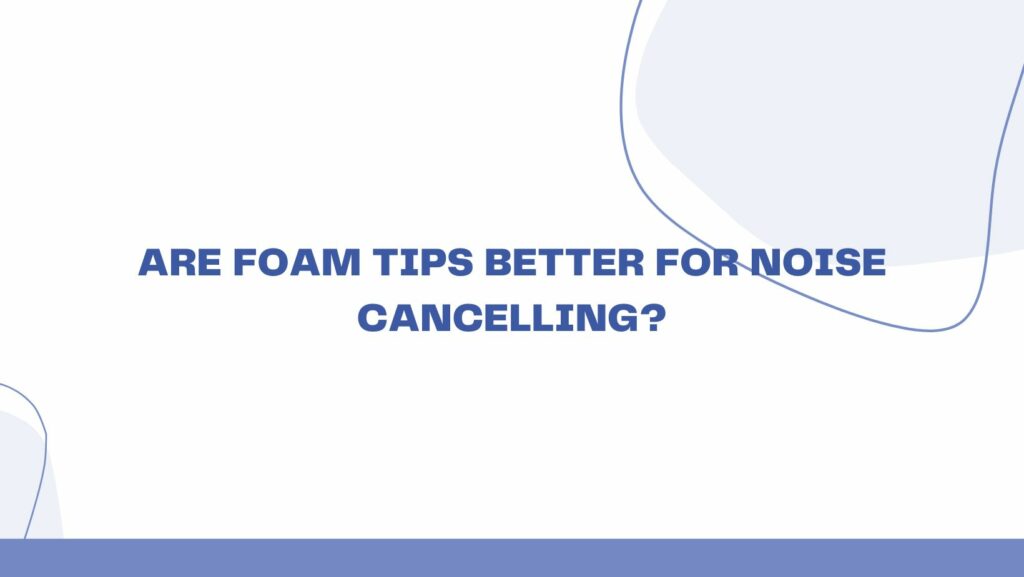In the quest for auditory bliss in an increasingly cacophonous world, the role of noise cancellation technology has become paramount. Active noise cancellation (ANC) has rapidly evolved, with manufacturers constantly seeking innovative solutions to create a more immersive and peaceful listening experience. Enter foam tips – often associated with comfort and sound quality, these unassuming accessories have sparked a debate: Are foam tips truly the superior choice for noise cancellation? In this exploration, we unravel the intricacies of foam tips and their potential to redefine the landscape of noise isolation.
The Science of Noise Cancellation:
Before delving into the merits of foam tips, it’s crucial to understand the principles of noise cancellation. ANC technology relies on the generation of anti-phase sound waves to counteract and cancel out incoming ambient noise. The effectiveness of this technology, however, is intricately tied to the physical seal formed between the earphones and the ear canal.
The Foam Advantage:
Foam tips bring a unique set of characteristics to the table that makes them stand out in the realm of noise cancellation. One of their primary strengths lies in their ability to conform to the contours of the ear canal, creating a snug and secure seal. This enhanced seal is instrumental in preventing the infiltration of external noise, providing a solid foundation for active noise cancellation to work more effectively.
Low-Frequency Absorption:
Foam tips, with their porous structure, excel at absorbing low-frequency sounds – the kind that often poses a challenge for standard noise cancellation technology. The ability of foam to absorb and dampen bass frequencies complements the active noise cancellation process, resulting in a more comprehensive reduction of ambient noise.
Customization for Optimal Seal:
The diversity in foam tip designs allows users to choose options that best suit their ears. Some manufacturers offer a variety of foam tip sizes, shapes, and materials, allowing users to customize their earphones for an optimal fit. This personalized approach ensures a tighter seal, maximizing the potential for noise isolation.
Comfort During Prolonged Use:
Beyond their impact on noise cancellation, the comfort factor offered by foam tips cannot be overlooked. Their ability to mold to the ear canal reduces pressure points, making them an ideal choice for extended wear. This comfort ensures that users can enjoy their noise-canceling experience for extended periods without discomfort.
Balancing Act: The Consideration of Alternatives:
While foam tips undeniably offer significant advantages in noise isolation, individual preferences vary. Some users may find silicon or other materials more comfortable or suitable for their specific needs. The key lies in finding the right balance between comfort and noise cancellation effectiveness.
Conclusion:
In the evolving landscape of noise cancellation, foam tips emerge as a compelling solution to enhance the efficacy of ANC technology. Their ability to form a secure seal, absorb low frequencies, and provide unmatched comfort during prolonged use positions them as a secret weapon in the pursuit of auditory serenity. As technology continues to advance, the synergy between foam tips and noise cancellation may very well represent the quiet revolution that reshapes our perception of ambient sound, offering a sanctuary of silence in an otherwise noisy world.


